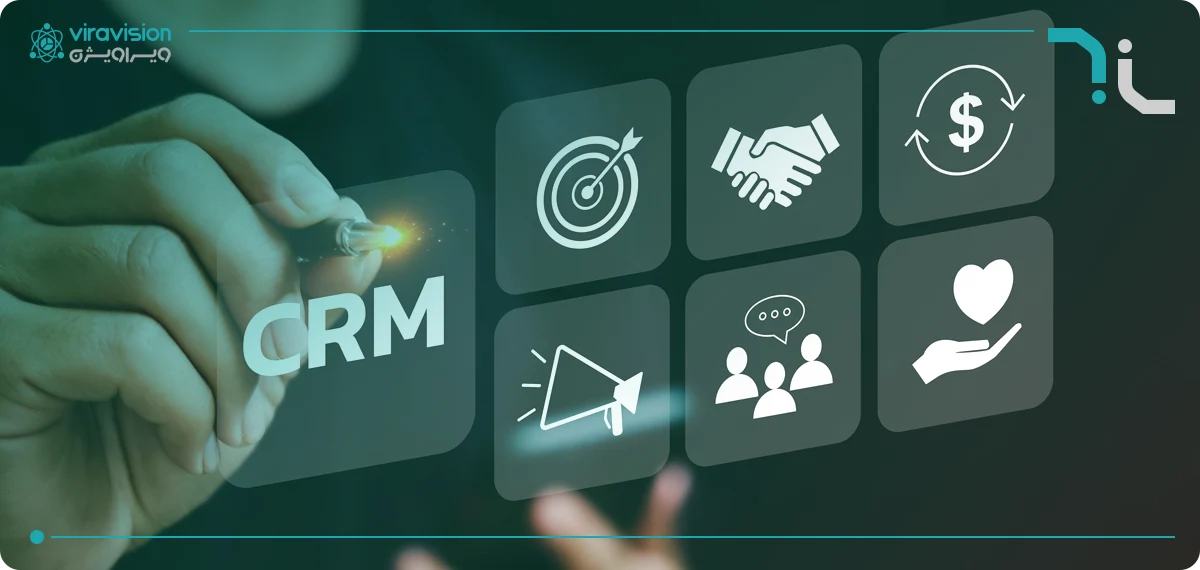Cloud vs On-Premise CRM

What Are Cloud-Based CRM and On-Premise CRM?
In today’s world, choosing between cloud-based CRM and on-premise CRM is a key decision for any business seeking to better manage customer relationships. Cloud CRM systems are accessible online via the internet and do not require specific physical infrastructure at the company’s location. In contrast, on-premise CRM requires installing software on the organization’s internal servers, with all information stored on the internal network.
By 2026 , considering the trend of digitalization and the rise of remote work, cloud CRM systems have gained increasing attention as they provide access from any location and device. Meanwhile, organizations that cannot store data in the cloud for security or regulatory reasons still prefer on-premise CRMs.
Therefore, understanding the differences between these two models is a prerequisite for making informed decisions about the best CRM for your business. Comparing cloud and on-premise CRMs helps you choose the most suitable option based on your organization’s specific needs. This knowledge affects not only the performance of your sales and support teams but also directly impacts productivity and data security.
Definition and Features of Cloud-Based CRM
Cloud-based CRM is a type of customer relationship management system where all data, tools, and features are hosted in the cloud on internet servers. Unlike traditional software that requires installation on internal servers, cloud CRM can be accessed using just a web browser and an internet connection. By 2026 , with the expansion of cloud infrastructure, this type of CRM has become a popular choice for small, medium, and even large organizations.
Key features of cloud CRM include real-time access, automatic updates, high scalability, encryption-based security, and no need for hardware maintenance. Another major advantage is the low initial cost and subscription-based payment model, allowing companies to benefit from a powerful CRM without heavy upfront investment. Compared to on-premise CRM, cloud CRM offers faster deployment and remote technical support, making it attractive for many organizations.
Understanding the features of cloud CRM is the first important step when evaluating and selecting the best CRM for your business. Considering technology trends in 2026 , cloud CRM is expected to play an increasingly significant role in organizations’ digital transformation.

What Is On-Premise CRM and How Does It Work?
On-premise CRM is a type of customer relationship management system installed and run on a company’s internal servers. Unlike cloud CRM, which is online-based, on-premise CRM requires hardware setup, software installation, and a technical team to maintain the system.
In this model, all customer information, contact histories, follow-ups, sales records, and analytics are stored on internal servers, and access is typically limited to the internal network or via VPN. Even in 2026 , while many businesses have shifted to cloud CRM, on-premise CRM remains a logical choice for organizations with serious concerns about data security, full infrastructure control, or deep system customization.
Internal server management allows the organization to be fully responsible for security, backups, and updates. This independence from external providers is crucial for specific industries such as banking, insurance, or government organizations. However, on-premise CRM comes with challenges such as high costs for servers, physical space, energy, specialized maintenance, and longer deployment times. Therefore, when comparing cloud and on-premise CRM, it is essential to consider your organization’s specific characteristics and available financial and human resources.
Comparing Cloud-Based and On-Premise CRM: Which Is Better?
Key Differences Between Cloud and On-Premise CRM
By 2026 , choosing between cloud-based and on-premise CRM has become a strategic decision in digital transformation. Understanding key differences plays an important role in selecting the best CRM. One of the main differences is the data storage location. In cloud CRM, data is stored on remote servers managed by the provider, whereas in on-premise CRM, all information is stored on internal servers. This affects security, accessibility, and maintenance directly.
Accessibility is another important difference. Cloud CRM systems allow users to access the system from any geographic location via a browser or mobile app, while on-premise CRM typically limits access to the internal network or requires more complex solutions like VPNs. Updates also differ: cloud CRMs are automatically updated by the provider, while in on-premise models, the IT team must perform manual updates, which may lag behind new versions.
Initial costs for on-premise CRM are much higher due to the need for servers, physical space, and maintenance teams, while cloud CRM operates on a subscription model with lower costs. These differences show that both models have specific pros and cons, and comparing cloud and on-premise CRM should be based on organizational needs, resources, and strategic priorities.

Security and Privacy in Cloud vs. On-Premise CRM
Security and privacy are among the top concerns when choosing the best CRM. By 2026 , with the rise of cyberattacks and legal requirements for user data protection, security considerations have become critical. In cloud CRM, your data is stored in the provider’s data centers equipped with advanced security layers, including end-to-end encryption, two-factor authentication (2FA), and multi-layer firewalls. Leading providers often hold international security certifications such as ISO 27001 or SOC 2.
In contrast, on-premise CRM places full security responsibility on the organization, allowing custom policies but also requiring management of all potential threats. This is suitable for organizations with strong IT teams or those handling sensitive data (government, military, finance). Small and medium businesses may struggle to implement full security requirements, making a reputable cloud CRM a safer option.
Ultimately, comparing cloud and on-premise CRM from a security perspective should consider the type of stored data, legal requirements, and internal team capabilities. There is no one-size-fits-all answer, but an informed choice minimizes risks and maximizes CRM efficiency in 2026 .
Costs: Initial and Long-Term
Costs are another crucial factor. Cloud CRM typically has lower initial costs, with subscription payments allowing access without investing in servers, software, or IT staff. This preserves cash flow and suits startups or growing businesses. On-premise CRM requires high upfront costs for licenses, servers, networking, and specialized staff. Maintenance, upgrades, backups, and security also incur ongoing costs. Customization for additional features adds further expenses. Thus, cloud CRM is generally better for resource-limited businesses, while on-premise is better for organizations with higher budgets and specific needs.
Advantages and Disadvantages of Cloud CRM in 2026
Cloud CRMs are popular in 2026 due to flexibility and easy access. Employees can access customer information from anywhere with any device. Subscription-based SaaS models avoid heavy upfront costs and allow businesses to scale easily. Security, updates, and backups are handled by the provider. Overall, benefits include lower infrastructure costs, improved team productivity, better customer responsiveness, and high scalability.

Disadvantages and Challenges of Cloud CRM
Challenges include reliance on internet connectivity, potential privacy/security concerns in sensitive industries, limited customization, and difficulties migrating data between providers. Awareness of these limitations is essential for making informed choices.
Advantages and Disadvantages of On-Premise CRM
On-premise CRM still suits large organizations with strict security requirements. Advantages include full control over data, deep customization, and easier integration with internal systems. Challenges include high setup costs, slower updates, time-consuming scalability, and internal responsibility for maintenance.

How to Choose the Best CRM for Your Business
Choosing the best CRM depends on organizational needs, scalability, security, and budget. Identify specific requirements, consider growth potential, ensure security compliance (like GDPR), and assess costs. Cloud CRM is often more cost-effective and flexible, while on-premise CRM suits organizations needing full control and customization. Evaluation and careful comparison ensure the right choice.
CRM Buying Guide 2026
In 2026 , with evolving technology and business needs, selecting the right CRM is complex. Consider compatibility with business needs, usability, scalability, data security, and cost. A system like Vira Cloud CRM can offer a scalable, secure, and cost-effective solution for managing customer relationships and supporting business growth.







